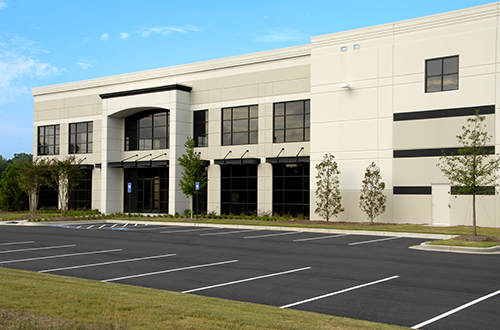 There’s an old adage in property management — maintenance is cheaper than repairs. This could not be truer than with parking lots. Whether your lot is asphalt or concrete, proper maintenance can, and will extend the life of your paved surfaces.
There’s an old adage in property management — maintenance is cheaper than repairs. This could not be truer than with parking lots. Whether your lot is asphalt or concrete, proper maintenance can, and will extend the life of your paved surfaces.
Although I’ve never been in the asphalt or concrete industry, I have been a property manager for over 20 years and I’ve dealt with the repair and maintenance of many parking lots.
So, with the warming weather, budding trees and crazy temperature swings, we know spring is in the air. It’s the perfect time to get outside and take a good look at your parking lot and other paved surfaces.
To Pave, Or Not to Pave
Often overlooked, the parking lot is an important part of how tenants view the property. It’s usually the first thing people see when they arrive at work and the last thing they see when they leave. If what they see is a cratered, crack filled gauntlet, they are not likely to think positively. As we all know, sometimes the money is just not available for parking lot repairs or maintenance. It’s often one of those items that is “value engineered” out of a budget.
While asphalt parking lots can, with proper maintenance last upwards of 20 years, they are not indestructible. Here in Colorado, our extreme winter weather, frequent freeze and thaw cycles, ice-melt and other chemicals can all wreak havoc on the integrity of your parking lot. That’s why performing regular maintenance and needed repairs is essential to protecting your investment.
Building Your Asphalt Maintenance Plan
Looking for and resolving any issues now will prevent bigger, more expensive problems later. To do this, start by performing a thorough inspection of your paved surfaces. This should be done on a regular basis. Notice any cracks, potholes or “alligatoring” (a series of cracks grouped together). You’ll also want to make note of any loose gravel or raveling of the pavement surfaces.
Proper drainage is essential for long life of a parking lot. Water seeping through cracks can cause weakening of the structure of the asphalt. During our winter months, this can lead to potholes from our freeze/thaw cycles. Also, look for any chemical stains, such as oil, gasoline and salts, which can all erode surfaces. Once you’ve identified and documented any issues found in your inspection, it’s time to build out a preventative maintenance plan and schedule repairs or repaving needs in the future.
Below are some areas to include in your parking lot maintenance plan:
Cleaning
Power-washing is a great way to clean away debris, chemicals and other materials that can erode the surface of your parking lot. Clearing all the dirt away also allows you to get a closer look at the surface so you can better identify any problem areas.
Crack Filling & Sealing
Left unchecked, water seeps into cracks, degrading the overall structure over time. Filling and sealing any cracks will stop the path of water, preventing erosion and more extensive damage.
Sealcoating
When left unprotected, your asphalt surfaces are prone to cracking and degradation from the sun, water and chemicals. Parking lots that are seal-coated and crack-filled every three to five years can last 30 years. It also restores the color of your pavement, bringing new life to your parking lot.
Resurfacing & Repaving
Sometimes routine maintenance isn’t enough. Aging lots, ones that have not been properly maintained, or those that see lots of usage from heavy vehicles, may require more extensive repairs. For lots with numerous cracks, large potholes or heaving slabs, resurfacing or repaving is necessary. But what is the difference?
When only the top layer is compromised or surface cracking is limited, resurfacing is an economical option. This involves removing the damaged layer and replacing it with a thicker surface. The result is a parking lot that looks like new.
Although a more extensive — and expensive — process, repaving is necessary when surface cracking is substantial or your foundation is compromised. When this happens the old asphalt is removed and your parking lot is completely regraded and replaced.
When is the best time for repairs?
Laying new asphalt requires ground temperatures of at least 50 degrees, so now is a good time to start planning any necessary projects. When planning any maintenance, it’s also important to remember the impact on your tenants. For example, many property owners will schedule work for weekends when parking lot traffic is lowest.
The bottom line: Maintaining your property’s parking lot can make a big difference in the value of your investment. Staying on top of maintenance and repairs not only improves safety and curb appeal, it will increase the life of this valuable property asset, saving you time and money as well.
Mark W. Kennedy is the President of Wheelhouse Commercial in Denver, Colorado. For more information about how Wheelhouse Commercial can help manage your properties, please call 303.518.7406 or email info@wheelhousecommercial.com.
is the President of Wheelhouse Commercial in Denver, Colorado. For more information about how Wheelhouse Commercial can help manage your properties, please call 303.518.7406 or email info@wheelhousecommercial.com.


